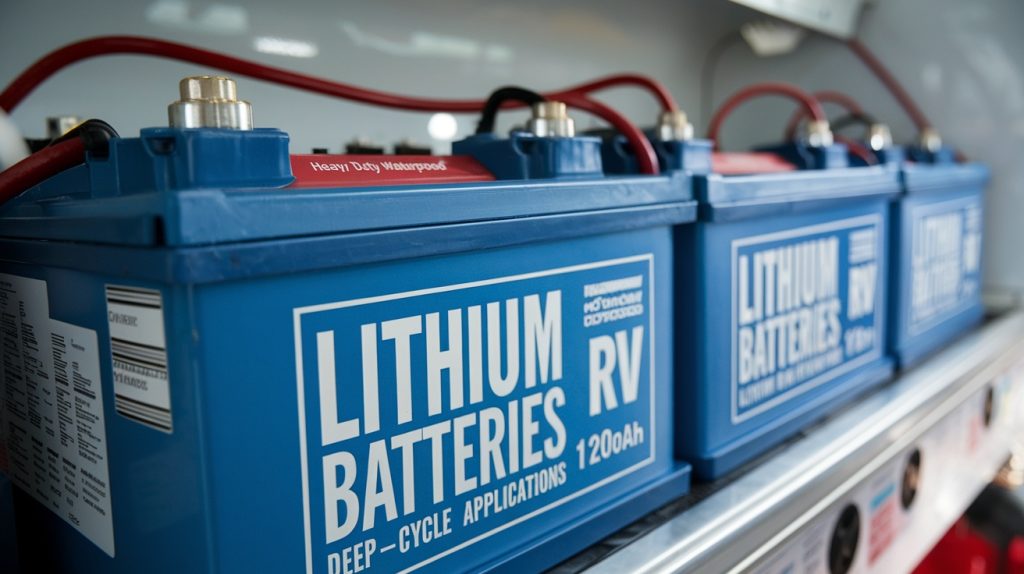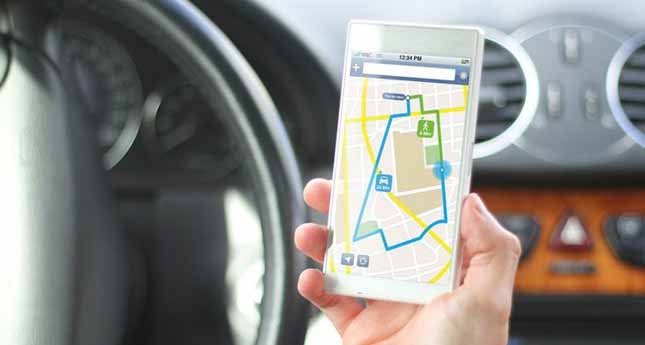Last Updated on December 8, 2024
To figure out how many lithium batteries you need for your RV, start by calculating your daily energy consumption. List all appliances and their wattages to determine total watt-hours required.
Generally, RVs consume between 100 to 300 amp-hours (Ah) per day. You should aim for a battery capacity that exceeds your daily needs by 1.5 to 2 times for reliability.
This ensures enough power for when you can’t recharge. If you integrate solar panels, you may reduce the number of batteries needed.
Key Takeaways
- Assess daily energy consumption, typically between 100-300 Ah, to determine the total battery capacity needed.
- Calculate total watt-hours by multiplying appliance wattage by hours of use for accurate energy needs.
- Select battery capacity that exceeds daily usage by 1.5 to 2 times for reliable performance.
- Consider solar integration to reduce the number of batteries needed for energy storage.
- Choose reliable lithium battery brands like Battleborn or Dragonfly Energy for optimal performance and lifespan.
Essential Factors for Determining Lithium Battery Needs in Your RV
How do you determine the right number of lithium batteries for your RV? First, assess your daily energy consumption, which typically ranges from 100-300 Ah per day. This figure is essential as it directly impacts your battery needs.
For instance, incorporating a solar battery charger can help maintain your battery charge while on the road, reducing the overall number of batteries required. If you plan longer trips, you’ll likely require additional batteries to maintain power without frequent recharging.
Next, consider integrating solar panels. They can greatly reduce the number of batteries needed since they recharge your batteries during the day, decreasing total energy storage requirements.
You should also evaluate your RV’s inverter size and the wattage of appliances you plan to use simultaneously. Higher wattage demands necessitate more battery capacity, ensuring you won’t overload your system.
Calculating Daily Battery Energy Consumption for Your RV
To accurately calculate your RV’s daily energy consumption, start by listing all the appliances and devices you’ll be using, along with their wattage and estimated hours of operation. This will help you determine the total watt-hours required for a day.
- Identify the wattage of each device.
- Estimate how many hours each appliance will run.
- Calculate the total watt-hours by multiplying wattage by hours.
For example, if your refrigerator consumes 150 watts and runs for 12 hours, it uses 1,800 watt-hours (150W x 12h).
As you compile this data, consider that average RV energy usage typically ranges from 100-300 amp-hours (Ah) per day.
Remember that lithium batteries provide nearly 100% of their rated capacity. So, if your daily consumption is 200Ah, you’ll need a battery bank with at least 200Ah of usable capacity.
Also, keep in mind seasonal usage patterns and the potential for solar input, as these factors can influence your calculations and guarantee adequate battery capacity for your specific needs.
Sizing Your Battery Bank
To size your battery bank effectively, start by calculating your daily energy consumption based on the wattage of all your appliances.
Once you have that figure, you’ll need to guarantee your battery capacity is 1.5 to 2 times your daily usage to maintain reliability.
This means if you require 300 Ah, you’ll need to select the appropriate number of lithium batteries to meet that demand efficiently.
Daily Energy Consumption
When calculating your RV’s daily energy consumption, it’s important to create a thorough list of all appliances and devices you plan to use, along with their wattage. This helps you pinpoint how much energy you’ll need each day.
Here are some common items to take into account:
- Lights and fans
- Refrigerator
- Electronics (laptops, phones, etc.)
Average RV energy consumption typically ranges from 100-300 amp-hours (Ah) per day, depending on your appliance usage.
To guarantee your lithium-ion batteries can meet your needs, calculate the total watt-hours required for a typical day. Once you have that figure, multiply your daily energy needs by 1.5 to 2. This accounts for variability and provides a buffer for reliability.
For instance, if your RV consumes 108 Ah daily, you’ll need a minimum battery bank of 216 Ah. This setup allows for extended use without frequent recharging.
Another advantage of lithium-ion batteries is their ability to provide up to 100% of their rated capacity, unlike lead-acid batteries, which typically offer only 50%.
Battery Capacity Calculation
Calculating the right battery capacity for your RV is essential for ensuring you have enough power for your adventures. Start by determining your total daily energy consumption in amp-hours (Ah).
List all your appliances, note their wattages, and sum their usage for a typical day. This will give you a baseline for your energy needs.
It’s recommended to have a battery capacity that exceeds your daily usage by 1.5 to 2 times. For instance, if your RV uses 100 Ah per day, aim for a minimum battery bank capacity of 150-200 Ah.
This extra capacity helps maintain performance and avoids deep discharges, which can harm your batteries.
Consider how many days you’d like to run your RV without recharging. The longer the autonomy you desire, the larger the battery capacity you’ll need.
Finally, remember that LiFePO4 batteries can provide nearly 100% of their rated capacity, unlike traditional lead-acid batteries, which typically offer only about 50%.
This characteristic makes LiFePO4 batteries an excellent choice for RV applications, allowing you to maximize your usable battery capacity effectively.
Choosing the Right Battery Type for Your RV
Choosing the right battery type for your RV involves understanding the various configurations and capacities available in lithium batteries.
You’ll find options like 12, 24, and 48-volt versions with capacities ranging from 50 to 500 Ah, making it easier to tailor your choice to your RV’s power needs.
Here are a few key points to regard:
- Higher energy density: Lithium iron batteries provide more usable power in a lighter package, ideal for weight-sensitive RVs.
- Group 27 recommendation: A common choice is Group 27 lithium batteries, typically around 100 Ah, simplifying your calculations for energy requirements.
- Versatile installation: Unlike lead-acid batteries, lithium options can be installed in various orientations without ventilation, maximizing space efficiency in your RV.
Selecting a good battery brand, such as Battleborn or Dragonfly Energy, is essential for ensuring reliability and performance.
The number of batteries you’ll need depends on your energy consumption and how often you plan to recharge.
Installation and Configuration Tips
After selecting the right lithium battery type for your RV, the next step is proper installation and configuration to maximize performance and longevity.
Confirm your batteries are installed in a well-ventilated area; unlike lead-acid batteries, lithium batteries can operate efficiently in various orientations. Use appropriately gauged wiring for connections to minimize voltage drop while following manufacturer specifications for safety.
When configuring multiple batteries, opt for a parallel setup to maintain system voltage and increase amp-hour capacity—ideal for most RV applications.
It’s also essential to incorporate a Battery Management System (BMS) to monitor your battery health, preventing overcharging and over-discharging.
Additionally, consider installing a solar charge system to enhance energy collection and reduce reliance on other power sources.
Here’s a quick reference table for your installation:
| Installation Tip | Description |
|---|---|
| Ventilation | Install in a well-ventilated area |
| Wiring | Use the appropriate gauge wiring |
| Configuration | Opt for parallel setup for multiple batteries |
| Battery Management System | Incorporate a BMS for monitoring |
| Solar Charge | Consider solar panels for ideal energy collection |
Maintenance Best Practices
Maintaining your lithium batteries is essential for guaranteeing their efficiency and longevity in your RV. By implementing a few best practices, you can greatly improve battery health and extend the battery lifespan.
- Regularly inspect connections and terminals for corrosion or loose fittings.
- Use voltmeters or battery management systems (BMS) to monitor individual cell voltages.
- Schedule monthly maintenance checks to clean terminals and inspect for damage.
Start by checking the connections and terminals frequently. Corrosion or loose fittings can lead to suboptimal performance and safety risks.
Next, keep an eye on battery health using a voltmeter or BMS, which helps you track overall performance and catch issues early.
Monthly maintenance checks will allow you to clean terminals and look for signs of wear, ultimately increasing battery lifespan.
Additionally, follow manufacturer guidelines for charging practices. Avoid over-discharging and maintain the battery within the recommended state of charge.
Finally, make sure your battery environment is temperature-controlled, as lithium batteries perform best within a wide range (-4°F to 135°F).
Frequently Asked Questions
How Many Lithium Batteries Do You Need for a RV?
You’ll find that RV energy consumption typically ranges from 100 to 300 amp-hours daily.
To determine how many lithium batteries you need, first calculate your daily usage. For instance, if your RV consumes 108 Ah per day, aim for at least 216 Ah of battery capacity, ideally with two 100 Ah batteries.
How Many Lithium Batteries Does It Take to Run an RV Air Conditioner?
To run an RV air conditioner effectively, you’ll need sufficient battery capacity.
A typical setup requires around 60-100 amp-hours (Ah) for a 2-hour cooling session.
Since lithium batteries should ideally not be discharged beyond 80%, a minimum of 100Ah is recommended for short use.
If you’re looking at extended operation or multiple sessions, consider a battery bank of 300-400Ah.
Adding solar panels can further enhance your power management.
How Many Batteries Do I Need for an Off-Grid RV?
To determine how many batteries you need for an off-grid RV, start by calculating your daily energy consumption in amp-hours (Ah).
Generally, you’ll want 1.5 to 2 times your daily usage in total battery capacity. For example, if you use 200 Ah daily, aim for 300-400 Ah.
Consider your RV size and depth of discharge, and don’t forget to factor in solar capacity, which can help reduce your overall battery needs.
Can I Just Replace My RV Battery With a Lithium Battery?
Yes, you can replace your RV battery with a lithium battery. They share the same connections as lead-acid batteries, making them compatible with most RV systems.
Lithium batteries, like LiFePO4, offer higher usable capacity and longer lifespans, lasting 10-15 years compared to just 3-5 for lead-acid. They also charge faster and perform well in extreme temperatures.
Power Your RV Adventure: Set Up the Perfect Lithium Batteries for a Smooth Journey
In the domain of RV adventures, choosing the right number of lithium batteries is like laying the foundation for your home on wheels. With an understanding of your energy needs and the proper calculations, you can guarantee a seamless journey.
By investing time in sizing your battery bank and maintaining it well, you’ll power your travels with confidence. So, embrace the freedom of the open road, knowing your lithium setup is as reliable as the stars guiding your way.



